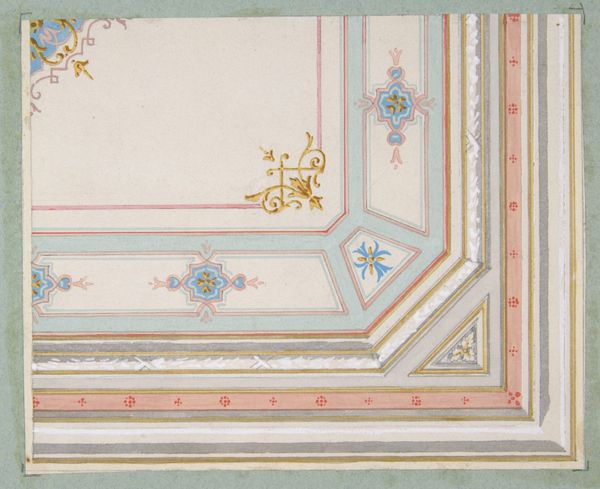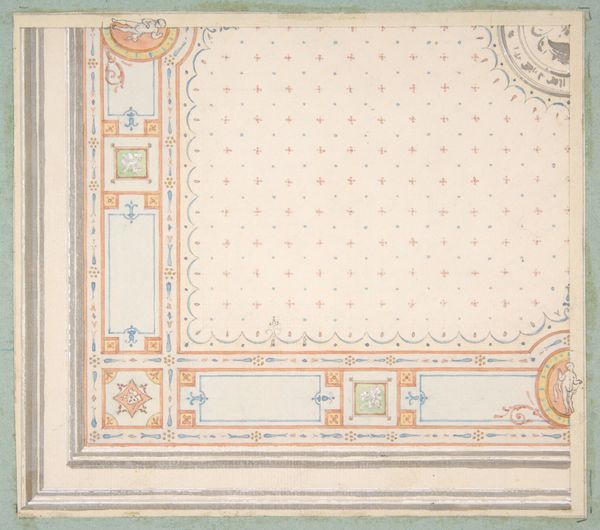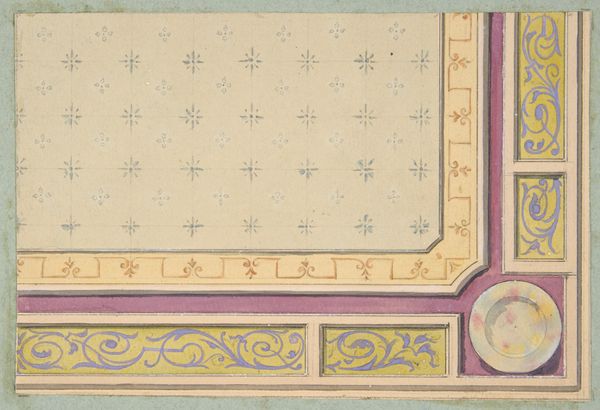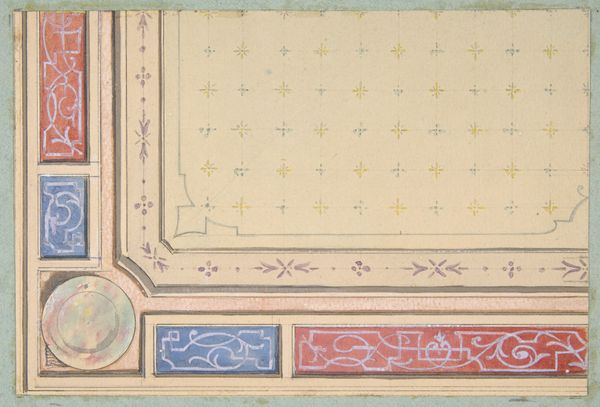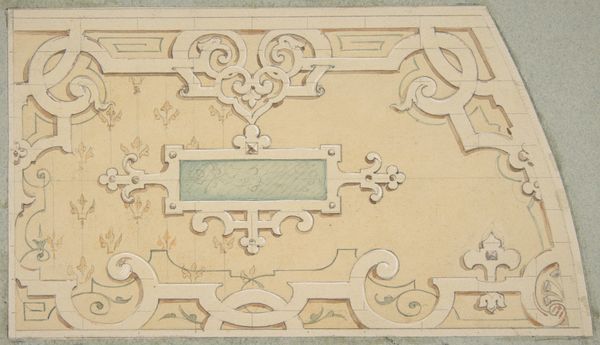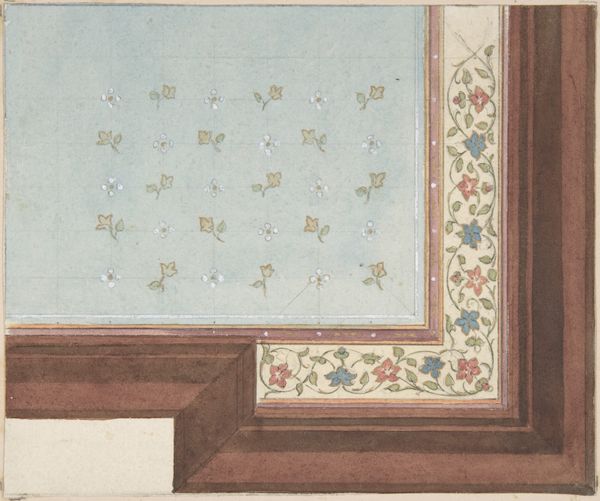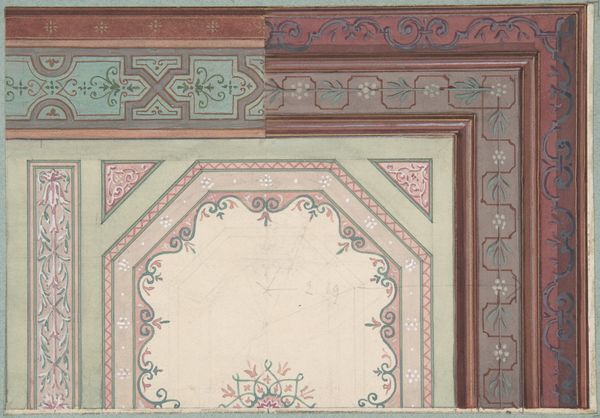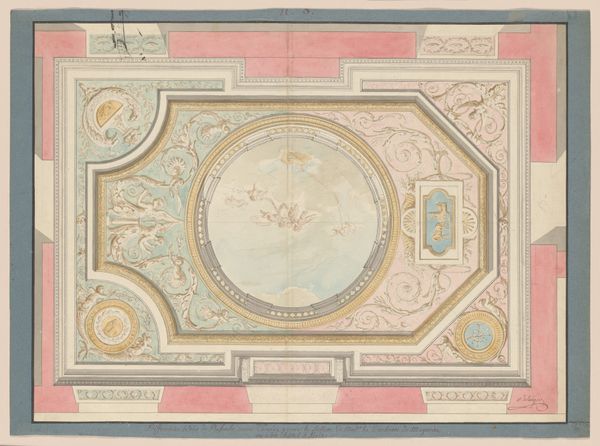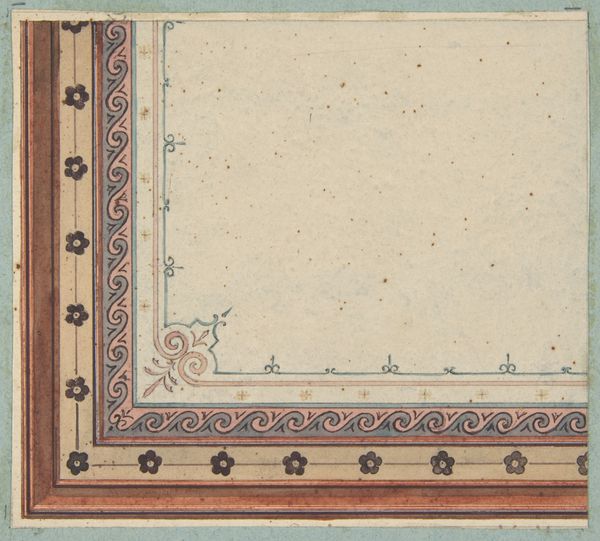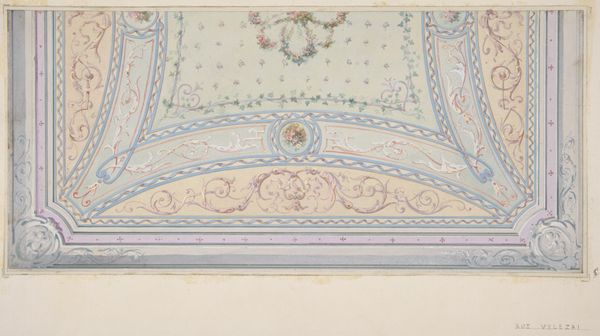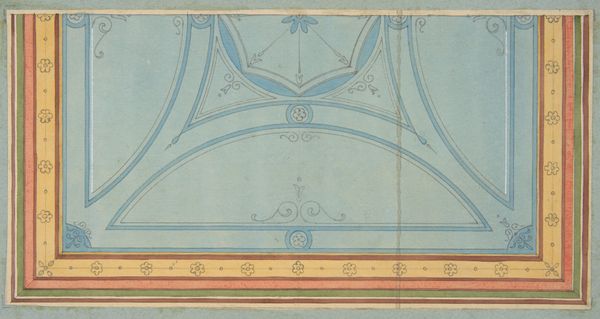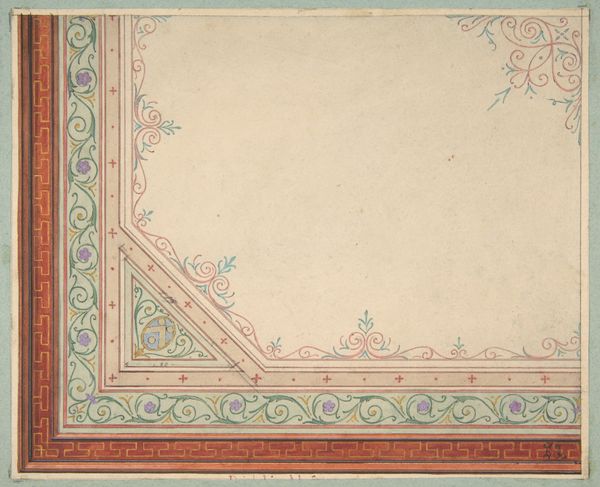
drawing, print, watercolor, architecture
#
drawing
#
water colours
# print
#
traditional architecture
#
watercolor
#
geometric
#
decorative-art
#
architecture
Dimensions: Overall: 8 13/16 x 10 9/16 in. (22.4 x 26.8 cm)
Copyright: Public Domain
Curator: Here we have "Design for a Ceiling," an architectural drawing likely from the latter half of the 19th century. It's attributed to Jules-Edmond-Charles Lachaise and showcases watercolor and pencil on paper. What's your first impression? Editor: Well, it definitely evokes a sense of calm. The pastel hues—soft blues, pale pinks, gentle yellows—create an airy, almost ethereal feel. I immediately think of laying on the floor staring upwards, contemplating existence. It feels like a dream waiting to happen. Curator: Exactly! It embodies the aesthetic sensibilities of the time, revealing the increasing professionalization of architectural design. The decorative arts were being formalized, influencing everything from public buildings to private residences. Drawings such as these played a crucial role, disseminating ideas, and setting standards. Editor: I notice that the grid system of the coffered ceiling battles to co-exist with whimsical design elements; is this a symptom of a society gripped between tradition and innovation, desperate for something 'new' yet paralyzed by historical precedent? Curator: You raise an intriguing point! This design really showcases an adherence to geometric principles balanced by a gentle sprinkling of playful motifs. In looking at how the elements co-exist on the page, do you consider what power dynamics of the Gilded Age, and their associated societal implications, affected the arts and architecture as well? Editor: Perhaps, yet maybe not, or rather not overtly... while reflecting broader socio-economic contexts is not to be overlooked, I would hate to dilute the art, per se. Curator: I respect that. Either way, it serves as a time capsule reflecting the social, cultural, and artistic values of the late 19th century, doesn't it? Editor: It does, and as such, in a way it almost challenges the modern viewer to adopt its spirit - breathe in the elegance, dream amidst the patterns, and reclaim this feeling of serene lightness.
Comments
No comments
Be the first to comment and join the conversation on the ultimate creative platform.
